IT & cloud Infrastructure
Major Components of IT and Cloud Infrastructure: A Comprehensive Overview
I. Introduction to IT Infrastructure
Defining IT Infrastructure: The Foundation of Digital Operations
Information technology (IT) infrastructure represents the complete set of components—both physical and virtual—that an organization requires for its IT environments and operations to maintain optimal performance.1 This intricate framework serves as the fundamental backbone of all digital operations, empowering businesses to function seamlessly, scale their capabilities, and deliver high-quality solutions to their customers.1 A well-designed and robust IT infrastructure is instrumental in enhancing employee productivity and overall operational efficiency, while simultaneously playing a crucial role in mitigating security risks, such as data breaches, and addressing challenges related to connectivity and system availability.1
The Evolution: From On-Premise to Cloud Computing
Historically, IT infrastructure was predominantly characterized by a "traditional" or "on-premise" model. In this setup, organizations directly owned, housed, and managed all their IT components within their own physical premises.1 This approach often necessitated significant physical space, substantial power consumption, and dedicated personnel for maintenance and operation.
The emergence of cloud computing marked a significant paradigm shift, introducing a modern and flexible alternative to traditional IT infrastructure. Cloud infrastructure allows businesses to access computing resources—including servers, storage, and networking capabilities—over the Internet, typically through managed service providers.1 This evolution brought forth numerous advantages, such as automatic software updates, enhanced remote support capabilities, and the flexibility to access IT services from a multitude of different geographic locations.3
This transition from traditional on-premise infrastructure to cloud-based services represents a fundamental shift in how businesses acquire and control their IT capabilities. Traditionally, IT infrastructure involved substantial capital expenditure (CapEx), where organizations made large upfront investments in purchasing physical assets like servers, networking equipment, and data center facilities. The shift to cloud computing, however, largely transforms this into an operational expenditure (OpEx) model, where businesses pay for IT services as they consume them, often on a subscription or pay-as-you-go basis. This re-allocation of financial resources has significant implications for an organization`s financial planning, enabling more agile budgeting and reducing the need for large, infrequent capital outlays. Furthermore, it influences IT staffing models, as less internal effort is required for physical hardware maintenance, allowing IT teams to focus more on service integration, optimization, and strategic initiatives. This fundamental change enhances strategic agility, allowing businesses to adapt more rapidly to market demands and technological advancements without being constrained by the lead times and costs associated with acquiring and deploying physical infrastructure.
II. Traditional IT Infrastructure Components
Traditional IT infrastructure forms the physical and logical foundation upon which an organization`s digital operations are built. It is characterized by components that are typically owned, housed, and managed directly by the organization, often within its own data centers.
A. Hardware: The Physical Backbone
Hardware components constitute the tangible foundation of an IT system, serving as the physical devices essential for performing core business functions and providing the necessary computing resources.1
- Servers, Computers, and Endpoints: Servers are robust computers specifically designed to store, manage, and distribute data across a network, facilitating access and resource sharing among multiple users.2 This category encompasses various specialized servers, such as file servers for data storage, web servers for hosting digital content, and mail servers for email communication.6 Beyond servers, everyday computing devices like desktop computers, laptops, and mobile devices function as endpoints where users perform their daily tasks.4 Internally, core hardware components include Central Processing Units (CPUs) for processing, hard drives for data storage, and memory devices (RAM) for temporary data access.5
- Data Centers: Data centers are secure, robust physical facilities specifically engineered to house, manage, and disseminate an organization`s critical data.2 These facilities typically contain the vast majority of an organization`s hardware, particularly servers and storage devices, and are designed to handle large volumes of data with high levels of security, efficiency, and reliability.4
- Networking Hardware (Routers, Switches, Hubs): These devices are indispensable for connecting and managing computer systems and other devices, enabling the seamless sharing of resources and information across a network.2 Routers act as traffic directors, guiding data packets between different networks to ensure smooth and efficient data flow.2 Switches connect multiple devices within a single network, intelligently directing data packets only to their intended destinations, which reduces network traffic and enhances efficiency.4 Hubs, a simpler form of networking device, connect multiple devices by broadcasting incoming data to all connected ports.6
B. Software: Enabling Functionality
Software represents the applications and programs that operate on or are brought to life by the hardware components.2 It functions as the operational intelligence, interpreting data and instructions to execute meaningful tasks within the IT environment.5
- Operating Systems (OS): Operating systems are foundational software, arguably the most critical component, responsible for managing a system`s processes, activities, and resources.1 They serve as the intermediary layer that connects and manages all physical hardware resources, allowing applications to run effectively.3 Common examples include Windows, Linux, and macOS.6
- Business Applications: These are specialized software programs designed to drive specific business processes and functions.5 This category includes Customer Relationship Management (CRM) systems for managing customer interactions and data, Enterprise Resource Planning (ERP) systems for integrating core business processes like finance, human resources, and supply chain, and Content Management Systems (CMS) for organizing and publishing digital content.1 Productivity applications, such as word processors and email clients, are also integral to daily business operations.2
- Utility and Management Software: This broad category encompasses programs that ensure the smooth and efficient operation of the IT infrastructure.5 Examples include web servers that host digital content, various management systems used for overseeing IT operations, and other utility programs that perform essential background tasks.2
C. Networking: The Connectivity Fabric
Networking involves the systematic practice of connecting and managing computer systems and devices to facilitate the sharing of resources and information.3 It is often described as the essential link that binds all IT infrastructure components together 2, ensuring continuous and secure communication both within the organization and with external entities.4
- Physical Connectivity: This refers to the tangible pathways through which data is transmitted across a network. Common examples include twisted-pair cables, coaxial cables, and fiber-optic cables, each offering different bandwidth and distance capabilities.5 Wireless technologies, such as Wi-Fi, also play a significant role in providing connectivity without physical cables.4
- Network Devices: Beyond the core routers, switches, and hubs, other critical network devices include modems, which convert digital signals to analog for transmission over telephone or cable lines and vice versa.6 Bridges connect two separate network segments, while gateways connect different network architectures and translate data between them.6 Repeaters boost network signals over long distances to prevent degradation, and Network Interface Cards (NICs) enable individual computers to connect to a network.3
- Network Operating Systems (NOS) and Protocols: A Network Operating System (NOS) is software specifically designed to manage and coordinate networked computers, enabling communication and resource sharing.6 Communication protocols are standardized sets of rules that govern how data is transmitted and exchanged across a network.6 The Internet Protocol Suite (TCP/IP), for instance, forms the fundamental basis for all modern internet traffic, comprising layers such as the Application, Transport, Internet, and Network Access layers.6 The OSI (Open Systems Interconnection) Model provides a conceptual framework for understanding the various functions and interactions within a network.6
D. Data Storage: On-Premises Data Repositories
Data storage in traditional IT infrastructure dictates how and where an organization`s data is maintained.2 This primarily involves physical devices and media located within the organization`s own premises.2
- Magnetic Storage:
- Optical Storage:
- Solid-State Storage:
E. Security Systems: Protecting the Perimeter
Security systems are paramount for safeguarding an organization`s digital assets from a wide array of cyber threats, including hacking attempts, malware infections, and data breaches.4 Traditional security models often adopt a "castle-and-moat" approach, which primarily focuses on establishing robust perimeter defenses.11
- Firewalls: These are essential software or hardware solutions that inspect and filter network traffic based on predefined security rules.2 Firewalls act as a barrier, allowing only authorized traffic to pass while blocking malicious or unauthorized access attempts.
- Intrusion Detection Systems (IDS): An IDS continuously monitors network activities for anomalies and suspicious behavior.11 When unusual patterns or potential threats are detected, the system raises alarms and alerts, providing early warnings of potential security incidents.
- Antivirus Software and Encryption Tools: Antivirus software is designed to detect, prevent, and remove malicious software, such as viruses, worms, and Trojans, from computer systems.5 Encryption tools play a crucial role in securing data confidentiality by transforming information into a coded format, making it unreadable to unauthorized individuals.12
- The CIA Triad: A foundational model in information security, the CIA Triad comprises three core principles: Confidentiality, Integrity, and Availability.12 Confidentiality ensures that data is kept secret and private, preventing unauthorized disclosure. Integrity guarantees that data remains accurate, complete, and unaltered. Availability ensures that authorized users can access data and systems whenever needed. These principles guide the development and implementation of security measures across the entire IT infrastructure.12
F. Management & Monitoring Tools: Overseeing Operations
Management and monitoring tools are integral to planning, delivering, operating, and controlling IT services, ensuring that they consistently meet business needs with efficiency and effectiveness.4 These tools are critical for the continuous operation and upkeep of the entire IT infrastructure.1
- IT Service Management (ITSM) Software: ITSM software manages the entire lifecycle of IT services, from planning and design to delivery and support.4 These systems often include modules for incident management (handling IT issues), problem management (identifying root causes), and change management (controlling modifications to IT services). Examples include ServiceNow and SysAid.13
- Remote Monitoring and Management (RMM) Software: RMM software enables IT teams to remotely monitor and manage a wide range of devices, including endpoints, servers, and network devices.13 These tools often incorporate capabilities such as patch management for applying software updates and remote control for troubleshooting and support. Notable examples include Atera, Syncro, N-able, and NinjaOne.13
- Asset and Patch Management Software: Asset management software tracks all IT assets—both hardware and software—throughout their lifecycle, from procurement to retirement.13 This helps organizations maintain an accurate inventory and optimize resource utilization. Patch management software automates the crucial process of applying software updates and security patches to systems, ensuring that vulnerabilities are addressed promptly.13
- Helpdesk and Ticketing Systems: These systems streamline user support by providing a centralized platform for managing IT-related issues, service requests, and incidents.13 They facilitate communication between users and IT support, track the status of requests, and help ensure timely resolution. Freshservice is an example of a widely used ticketing system.13
The inherent design of traditional IT infrastructure, where hardware serves as the physical foundation, software brings that hardware to life, and networking acts as the connective tissue, creates a tightly coupled and interdependent system. Data centers, as centralized repositories, house the physical components, and security systems are deployed to protect the entire perimeter. This strong interdependency means that a failure or vulnerability at one physical layer can potentially cascade and impact the entire system. This tight coupling contributes to higher operational complexity, as each component often demands dedicated physical space, consistent power supply, specialized cooling, and a team of experts for ongoing maintenance and troubleshooting. Consequently, this model typically involves significant capital expenditures for initial setup and substantial operational expenditures for continuous upkeep. The "castle-and-moat" security approach, while focused on strengthening the perimeter, further reinforces this centralized, physical-location-dependent model, which can present vulnerabilities once the outer defenses are breached. This architectural characteristic inherently limits the agility and scalability of traditional IT environments.
III. Cloud Infrastructure Components
Cloud infrastructure represents a modern approach to delivering IT resources, leveraging virtualization to abstract physical hardware and provide services over the internet. It combines hardware and software elements, including computing power, networking, storage, and virtualization resources, to enable cloud computing.14 This model offers significant advantages over traditional infrastructure, such as a lower total cost of ownership, enhanced flexibility, and superior scalability.15
A. Core Components (Virtualization-Centric)
Cloud infrastructure provides capabilities akin to physical infrastructure, but with added benefits derived from its virtualized nature.
- Underlying Hardware: Despite the abstraction provided by virtualization, cloud infrastructure fundamentally relies on physical hardware.7 This includes powerful servers, CPUs, RAM, power supplies, load balancers, firewalls, routers, switches, and storage arrays.7 These physical components are typically housed in massive, globally distributed data centers managed by cloud providers, ensuring redundancy, high availability, and optimal performance across various geographical locations.14
- Virtualization: Virtualization is a pivotal component of cloud infrastructure, serving as the core technology that abstracts computing functions, data storage, and network resources from the underlying physical hardware.7 This abstraction allows users to interact with the cloud infrastructure through a graphical user interface (GUI), without needing direct access to the physical machines.7 Virtualization enables cloud providers to host platforms and software for multiple clients on shared hardware, ensuring that each client`s services remain isolated and secure from others.17 Key virtualized resources include Virtual Machines (VMs), which emulate physical computers, and containers, which package applications with all their dependencies for consistent deployment.7
- Cloud Networking: Cloud networking focuses on managing, connecting, and controlling network resources within the cloud environment.18 It leverages both physical networking hardware (such as switches, wiring, routers, and load balancers) and a sophisticated virtualization layer to deliver cloud resources to users over the internet.7
- Cloud Storage: Cloud storage refers to off-site file servers and storage systems managed by third-party cloud service providers.7 Users can access their data via the internet or through cloud-based applications.7 Cloud storage is fundamentally a form of virtualization, where storage capacity is decoupled from the underlying physical hardware, enabling on-demand scaling of storage resources.17
Storage Type | Description | Key Characteristics | Typical Use Cases |
Object Storage | Stores data as self-contained objects in flat storage pools (buckets), not in traditional file hierarchies. | Virtually unlimited scalability; customizable metadata; cost-effective for large volumes; unstructured data. | Modern applications, data lakes, analytics, backup, archiving, web content, media files. |
File Storage | Organizes data in a hierarchical folder and file structure. | Familiar file system; uses protocols like SMB (Windows) and NFS (Linux); often associated with NAS. | Shared network drives, home directories, content management systems, general-purpose file sharing. |
Block Storage | Stores data in fixed-size blocks, each with a unique identifier. | Dedicated, low-latency; analogous to DAS/SAN; high performance for transactional workloads; limited metadata. | Databases (relational and NoSQL), Enterprise Resource Planning (ERP) systems, high-performance computing (HPC). |
B. Cloud Service Models
Cloud computing resources are delivered through various "as-a-service" models, which delineate the distribution of control and responsibility between the cloud service provider (CSP) and the customer.4
- Infrastructure as a Service (IaaS): In the IaaS model, the CSP provides virtualized compute resources, such as virtual servers, data storage, and network equipment, on demand over the internet.4 The customer retains responsibility for managing the operating systems, applications, data, middleware, and runtime services deployed on this infrastructure.14 This model offers the highest level of control to the user over their cloud infrastructure but also requires more effort in terms of management and configuration.17
- Platform as a Service (PaaS): PaaS is a cloud computing model where the CSP delivers a complete development and deployment environment.4 This includes all the necessary infrastructure, hardware, and software tools required for developers to build, run, and manage their applications. Customers using PaaS can focus primarily on application development and deployment, bypassing the need for costly upfront infrastructure investments and the complexities of managing software licenses and development tools.7 The CSP manages the underlying platform components, such as runtime environments, libraries, and operating systems.21
- Software as a Service (SaaS): SaaS is a cloud-based delivery model where a third-party vendor manages all aspects of a software application.4 This comprehensive management includes coding, hosting, monitoring, updating, security, and the maintenance of all associated hardware and infrastructure.7 Users access the application from virtually anywhere with an internet-connected device, assuming security protocols are met.7 In this model, the customers responsibility is minimal, primarily focusing on user access management and ensuring data protection within the application.21
C. Cloud Security: The Shared Responsibility Model
The shared responsibility model is a foundational framework in cloud security that clearly defines the security obligations between the cloud service provider (CSP) and the cloud customer.21 It articulates that while the CSP is responsible for the security
of the cloud (the underlying infrastructure), the customer is accountable for security in the cloud (their data and applications).21
- Cloud Service Provider (CSP) Responsibilities (Security of the Cloud): CSPs bear the responsibility for the foundational security of the underlying cloud infrastructure.21 This includes:
- Customer Responsibilities (Security in the Cloud): Customers are ultimately accountable for securing their data and applications deployed within the cloud environment.21 These responsibilities include:
- Varying Responsibilities by Service Model: The specific division of responsibilities shifts significantly depending on the cloud service model adopted:
Cloud Service Model | Cloud Service Provider (CSP) Responsibilities | Customer Responsibilities | Level of Customer Control |
SaaS | Application, runtime, OS, virtualization, physical infrastructure, network infrastructure, host infrastructure. | User access management, data protection (within application), account security. | Low |
PaaS | Runtime, OS, virtualization, physical infrastructure, network infrastructure, host infrastructure. | Applications, data, user access management (within application). | Medium |
IaaS | Virtualization, physical infrastructure, network infrastructure, host infrastructure. | Operating systems, runtime, applications, data, network controls, user access management. | High |
This shared responsibility model is not merely a contractual detail but a critical operational and risk management framework. A lack of clear understanding of this model is frequently cited as a leading cause of security incidents and data breaches in cloud environments.22 Even if a CSP maintains an impeccable security posture for its underlying infrastructure, any misconfiguration or oversight on the customer`s side regarding their responsibilities can expose sensitive data and applications. This necessitates that organizations investing in cloud services also invest in cloud-specific security expertise, tools, and processes. The complexity of managing these responsibilities is further amplified in multi-cloud environments, where an organization might be dealing with different shared responsibility models from multiple CSPs, requiring careful alignment and consistent security practices across all platforms.22
D. Cloud Management & Automation: Orchestrating the Cloud
Cloud environments, with their dynamic, scalable, and distributed nature, necessitate advanced management and automation capabilities. These tools are crucial for efficient provisioning, configuration, monitoring, and optimization of cloud resources.
- Infrastructure as Code (IaC): IaC is a transformative practice that involves managing and provisioning IT infrastructure through code rather than manual processes.23 This approach entails creating configuration files that precisely define infrastructure specifications, making them easier to edit, distribute, and version-control.23 IaC is fundamental to modern DevOps practices and Continuous Integration/Continuous Delivery (CI/CD) pipelines, as it significantly reduces manual provisioning efforts and ensures consistent, repeatable deployments across various environments.23 It is particularly effective for managing hybrid and multi-cloud environments, allowing organizations to define and manage resources consistently across disparate platforms, which offers both flexibility and cost reduction.23 IaC tools, such as Terraform, Ansible, Chef, Puppet, and AWS CloudFormation, often employ a declarative approach, where the desired state of the infrastructure is defined, and the tool automatically provisions and maintains it.23
- Automation and Management Software: Beyond IaC, cloud environments rely on a diverse array of automation and management software for day-to-day operational tasks. This includes tools designed for provisioning virtual resources 14, comprehensive performance monitoring, managing containerized applications, and orchestrating complex workflows across distributed systems.14 A rapidly evolving area is AIOps (Artificial Intelligence for IT Operations), which leverages AI and machine learning to manage large volumes of operational data, automate IT operations, and predict and resolve issues proactively.1
Virtualization is not merely a technical feature but the foundational architectural paradigm that underpins all the transformative advantages of cloud computing. It enables the decoupling of computing power, storage, and networking from the underlying physical hardware, allowing resources to be abstracted and presented as virtual entities. This abstraction facilitates resource pooling, where a large pool of physical resources can be shared among multiple users, leading to higher utilization and efficiency. It also enables rapid provisioning, allowing new resources to be spun up or down in minutes, rather than days or weeks, which is characteristic of traditional hardware procurement. Furthermore, virtualization is the key enabler of multi-tenancy, allowing multiple customers to securely share the same physical infrastructure, and on-demand scaling, where resources can be dynamically adjusted to meet fluctuating demands. Without robust virtualization technologies, the concept of the "cloud" as an elastic, scalable, and cost-effective utility would not be possible. Its central role highlights that the shift to cloud computing is not just about where IT resources are located, but fundamentally about how they are architected, delivered, and consumed.
IV. Key Differences and Synergies: Traditional vs. Cloud
The evolution from traditional IT infrastructure to cloud computing represents a significant transformation in how organizations manage and utilize their technological resources. While both paradigms aim to support digital operations, their underlying principles, operational models, and strategic implications differ considerably.
Ownership and Management Paradigms
In traditional IT, organizations maintain full ownership and direct management of all their IT components, typically housed on-premises.1 This model grants complete control over data and infrastructure 10, but it also necessitates significant physical space, power, cooling, and a dedicated internal IT staff for ongoing maintenance and support. Conversely, in
cloud infrastructure, resources are accessed over the internet from a managed service provider.1 The cloud provider owns and operates the underlying physical infrastructure, while the customer manages the virtual resources, applications, and data they deploy on top of it.26 This fundamental shift outsources much of the physical infrastructure management to the CSP.9
Scalability and Flexibility
Traditional IT environments are inherently difficult to scale due to physical limitations and the time and cost involved in purchasing, installing, and configuring additional hardware.9 This makes them less flexible in adapting to variable or rapidly changing business needs.3 In stark contrast,
cloud infrastructure is designed for high scalability and elasticity, allowing businesses to effortlessly increase or decrease computing capacity, storage, and networking resources on demand without requiring any physical hardware investments.3 This inherent flexibility enables rapid adaptation to market changes and business growth.3
Cost Structures
Traditional IT typically involves higher upfront capital expenditures (CapEx) for acquiring hardware, software licenses, and setting up data centers.3 Beyond the initial investment, there are significant ongoing operational expenses (OpEx) for maintenance, power consumption, cooling, and physical space.3
Cloud infrastructure, on the other hand, substantially reduces or even eliminates the need for physical servers and on-premises data centers.7 It is often more cost-effective due to its pay-as-you-go or subscription models, effectively converting CapEx into OpEx and allowing businesses to pay only for the resources they consume.3
Security Approaches
Traditional security models often adhere to a "castle-and-moat" approach, concentrating defenses at the network perimeter with tools like firewalls and Intrusion Detection Systems (IDS).11 This model frequently operates under the assumption that internal users and devices are inherently trustworthy once inside the network.11 Organizations maintain full control over their security implementations.10
Cloud security, conversely, operates under the principle of a shared responsibility model, where CSPs are accountable for securing the underlying infrastructure (of the cloud), while customers are responsible for securing their data and applications (in the cloud).21 Cloud security emphasizes identity and context-based access control, moving away from a sole reliance on network location for trust decisions.11
Operational Management and Automation
Traditional IT operations often involve manual management and maintenance of physical hardware.9 Operational tasks, such as provisioning servers or deploying applications, can be human-intensive, leading to slower deployment cycles and a higher potential for human error.23 In the
cloud, operations are heavily reliant on virtualization and advanced automation tools, most notably Infrastructure as Code (IaC), for provisioning, configuration, and ongoing management.23 This automation enables automatic software updates, streamlined remote support, and facilitates continuous integration and continuous delivery (CI/CD) pipelines, leading to faster, more reliable deployments.3
Component Category | Traditional IT Characteristics | Cloud Infrastructure Characteristics | Key Distinctions/Benefits |
Ownership & Management | Owned and managed by the organization (on-premise); requires physical space, power, dedicated staff. | Resources accessed from managed service provider; provider owns physical infrastructure, customer manages virtual resources/apps. | Full control vs. Outsourced management; CapEx vs. OpEx. |
Scalability & Flexibility | Difficult to scale due to physical limitations; less flexible for variable needs; slow adaptation. | Highly elastic and scalable on demand; greater flexibility; rapid adaptation to market changes. | Limited vs. Elastic scalability; Slow vs. Rapid deployment. |
Cost Structure | Higher upfront capital expenditure for hardware; ongoing OpEx for maintenance, power, space. | Reduces/negates physical server need; cost-effective pay-as-you-go/subscription model; OpEx. | High CapEx vs. Low CapEx/OpEx; Fixed vs. Variable costs. |
Security Approach | "Castle-and-moat" perimeter security; trusts internal users; full control over implementation. | Shared responsibility model (CSP secures of cloud, customer secures in cloud); identity/context-based access. | Perimeter-focused vs. Distributed/Shared; Full control vs. Shared responsibility. |
Operational Management | Manual management and maintenance; human-intensive tasks; slower deployment; higher error potential. | Leverages virtualization and automation (IaC); automated updates, remote support, CI/CD; faster, more reliable deployments. | Manual vs. Automated; Slower vs. Faster deployment. |
The shift from traditional IT to cloud computing profoundly impacts the role of IT professionals. In a traditional environment, significant time and expertise are dedicated to manual management, physical hardware maintenance, and managing the physical space, power, and cooling requirements of data centers. With the move to the cloud, many of these responsibilities are offloaded to cloud service providers. This fundamental change means that IT professionals spend less time on physical infrastructure upkeep and more on cloud architecture design, security configuration, automation scripting, vendor relationship management, and optimizing cloud resource consumption. The role evolves from managing tangible assets to managing services and code, demanding a blend of technical depth in cloud platforms, security, and automation, coupled with strategic competencies in cost optimization and service integration. This evolution requires continuous learning and adaptation to new technologies and operational models.
While traditional and cloud infrastructures are often presented as distinct alternatives, the increasing adoption of "hybrid cloud" models reveals a strategic convergence. Many organizations choose a hybrid approach, combining public cloud services, private cloud deployments, and existing on-premises hardware.3 Similarly, "cloud-enabled networking" integrates traditional onsite network infrastructure with cloud access.18 This widespread adoption of hybrid models indicates that for established organizations, the transition to cloud is rarely an "all or nothing" proposition. Businesses strategically leverage the benefits of cloud computing, such as scalability and cost-effectiveness, while retaining critical control over sensitive data or continuing to utilize legacy systems that are not easily migrated to the cloud.3 This reality underscores that traditional IT components will continue to coexist and integrate with cloud services. Consequently, robust interoperability, seamless networking, and unified management across diverse environments become paramount for developing effective modern IT strategies. This convergence signifies a future where IT infrastructure is a fluid, interconnected ecosystem rather than a rigid, singular deployment model.
V. Conclusion
IT infrastructure, whether deployed in a traditional on-premises model or through modern cloud computing paradigms, remains the indispensable foundation for all digital operations within an organization. While the core component categories—hardware, software, networking, data storage, security, and management—remain fundamental, their implementation, ownership, and operational models have undergone a profound evolution with the advent of cloud computing.
The landscape has shifted dramatically from a capital-intensive, physically constrained model to a more agile, service-centric, and operationally flexible environment. Virtualization stands as the pivotal innovation enabling this transformation, abstracting underlying physical resources to deliver on-demand, scalable, and cost-effective services. This shift has also redefined security responsibilities, moving towards a shared model where both cloud providers and customers play critical roles in safeguarding data and applications. Furthermore, the reliance on automation through practices like Infrastructure as Code has become paramount for managing the complexity and dynamic nature of cloud environments.
The ongoing convergence of traditional and cloud environments, particularly through hybrid and multi-cloud strategies, highlights that a comprehensive understanding of both paradigms is essential for effective IT strategy in the contemporary business landscape. Organizations are increasingly seeking to balance the control and sovereignty offered by on-premises solutions with the scalability, flexibility, and cost efficiencies of cloud services. This dynamic evolution, driven by continuous technological advancements and ever-changing business demands, ensures that the field of IT and cloud infrastructure will remain a critical area of strategic focus for years to come.
Works cited
- What Is IT Infrastructure? | Coursera, accessed August 16, 2025, https://www.coursera.org/articles/it-infrastructure
- Guide to the Components of IT Infrastructure | AJTC, accessed August 16, 2025, https://www.ajtc.net/blog/guide-to-it-infrastructure-components
- What is IT infrastructure? - InvGate, accessed August 16, 2025, https://blog.invgate.com/it-infrastructure
- 7 IT Infrastructure Components Explained: Benefits of Strong IT, accessed August 16, 2025, https://www.allsafeit.com/blog/it-infrastructure-components
- 7 Basic IT Infrastructure Components: How to Maintain Your IT?, accessed August 16, 2025, https://www.infotank.com/blog/it-infrastructure-components
- Basic Computer Network Components You`ll Need | Nile, accessed August 16, 2025, https://nilesecure.com/network-design/basic-computer-network-components-youll-need
- What Is Cloud Infrastructure? | CrowdStrike, accessed August 16, 2025, https://www.crowdstrike.com/en-us/cybersecurity-101/cloud-security/cloud-infrastructure/
- What Is Computer Networking? | IBM, accessed August 16, 2025, https://www.ibm.com/think/topics/networking
- Demystifying Traditional Data Storage Methods | Cloud | Haptic ..., accessed August 16, 2025, https://haptic-networks.com/cloud/data-storage-methods/
- Difference between Cloud Storage and Traditional Storage - GeeksforGeeks, accessed August 16, 2025, https://www.geeksforgeeks.org/dbms/difference-between-cloud-storage-and-traditional-storage/
- Zero Trust vs. Traditional Network Security: What`s the Difference?, accessed August 16, 2025, https://www.birchwoodu.org/zero-trust-vs-traditional-network-security/
- What is the CIA Triad and Why is it important? - Fortinet, accessed August 16, 2025, https://www.fortinet.com/resources/cyberglossary/cia-triad
- 9 Best IT Management Tools In 2025: Reviews & Pricing - Atera, accessed August 16, 2025, https://www.atera.com/blog/best-it-management-tools/
- What Is Cloud Infrastructure? - Fortinet, accessed August 16, 2025, https://www.fortinet.com/resources/cyberglossary/cloud-infrastructure
- What is Cloud Computing Infrastructure? - VMware, accessed August 16, 2025, https://www.vmware.com/topics/cloud-computing-infrastructure
- Cloud Infrastructure: 4 Key Components and Deployment Models - Spot.io, accessed August 16, 2025, https://spot.io/resources/cloud-optimization/cloud-infrastructure-4-key-components-and-deployment-models/
- Cloud Computing Infrastructure: Structure, Components, and ..., accessed August 16, 2025, https://www.synopsys.com/blogs/chip-design/cloud-computing-infrastructure.html
- What is Cloud Networking? | Auvik - Auvik Networks, accessed August 16, 2025, https://www.auvik.com/franklyit/blog/cloud-networking/
- What is Cloud Storage? - Cloud Storage Explained - AWS, accessed August 16, 2025, https://aws.amazon.com/what-is/cloud-storage/
- What is Cloud Storage and How Does it Work? | Record Nations, accessed August 16, 2025, https://www.recordnations.com/blog/what-is-cloud-storage/
- The Shared Responsibility Model Explained w/Examples | Wiz, accessed August 16, 2025, https://www.wiz.io/academy/shared-responsibility-model
- What Is the Shared Responsibility Model? - Check Point Software, accessed August 16, 2025, https://www.checkpoint.com/cyber-hub/cloud-security/shared-responsibility-model/
- What is Infrastructure as Code (IaC)? - Red Hat, accessed August 16, 2025, https://www.redhat.com/en/topics/automation/what-is-infrastructure-as-code-iac
- Infrastructure as code - Google Cloud, accessed August 16, 2025, https://cloud.google.com/docs/iac
- Cloud Storage vs Local Storage: Which is Better? - TierPoint, accessed August 16, 2025, https://www.tierpoint.com/blog/cloud-storage-vs-local-storage/
- Cloud networking | What is cloud network technology? | Cloudflare, accessed August 16, 2025, https://www.cloudflare.com/learning/cloud/what-is-cloud-networking/
- Cloud vs Traditional databases: What to choose? - WeAreBrain, accessed August 16, 2025, https://wearebrain.com/blog/cloud-based-vs-traditional-databases-comparison/
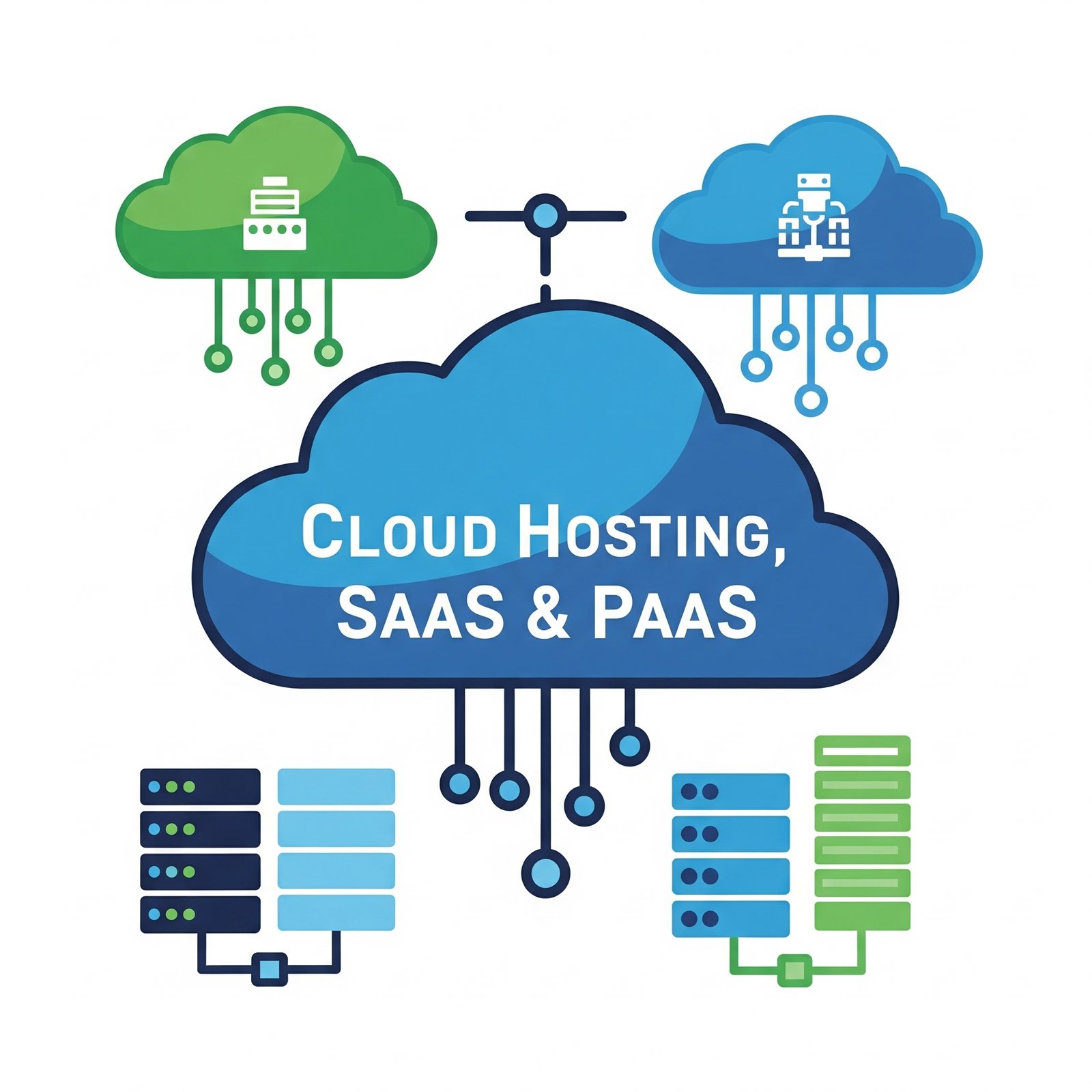
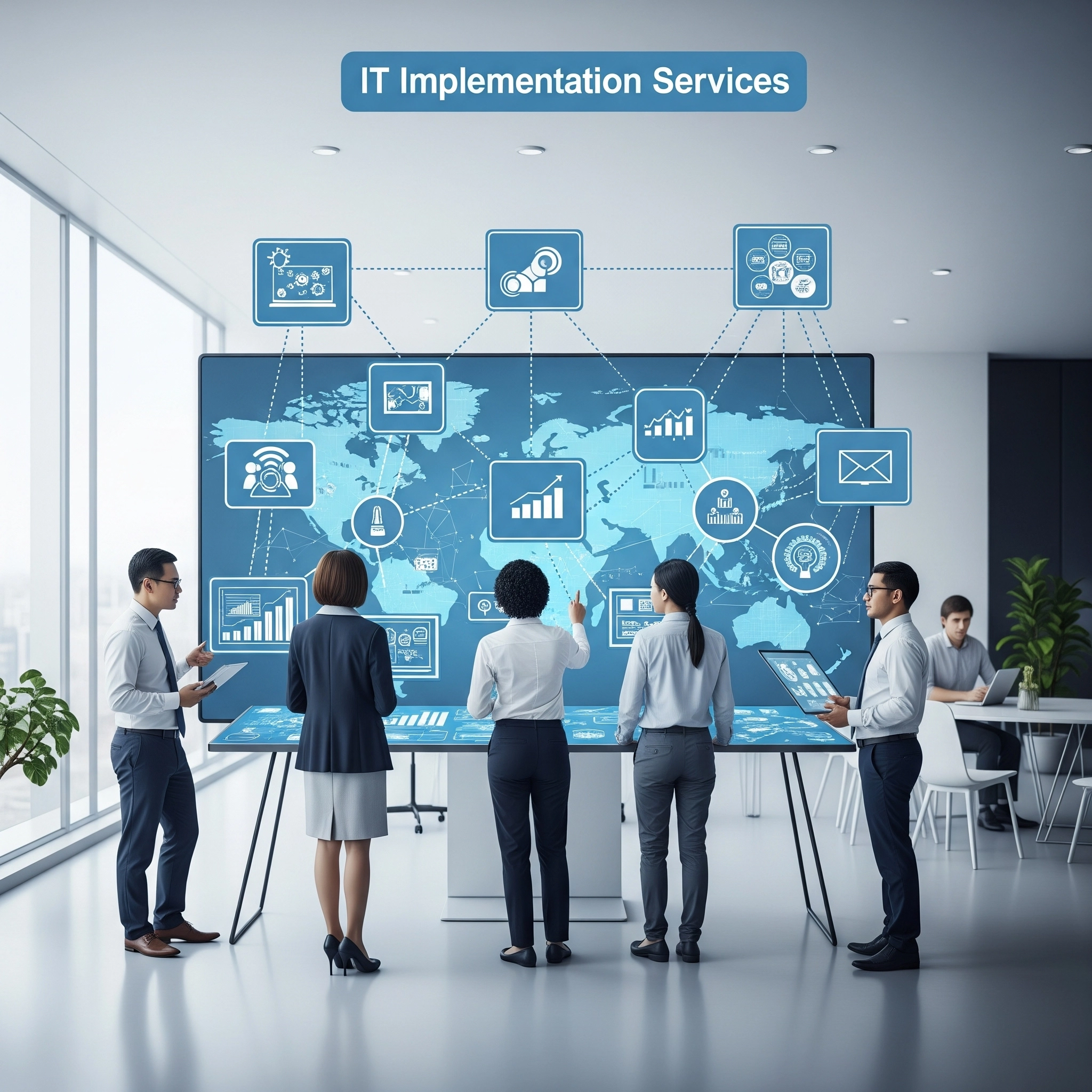

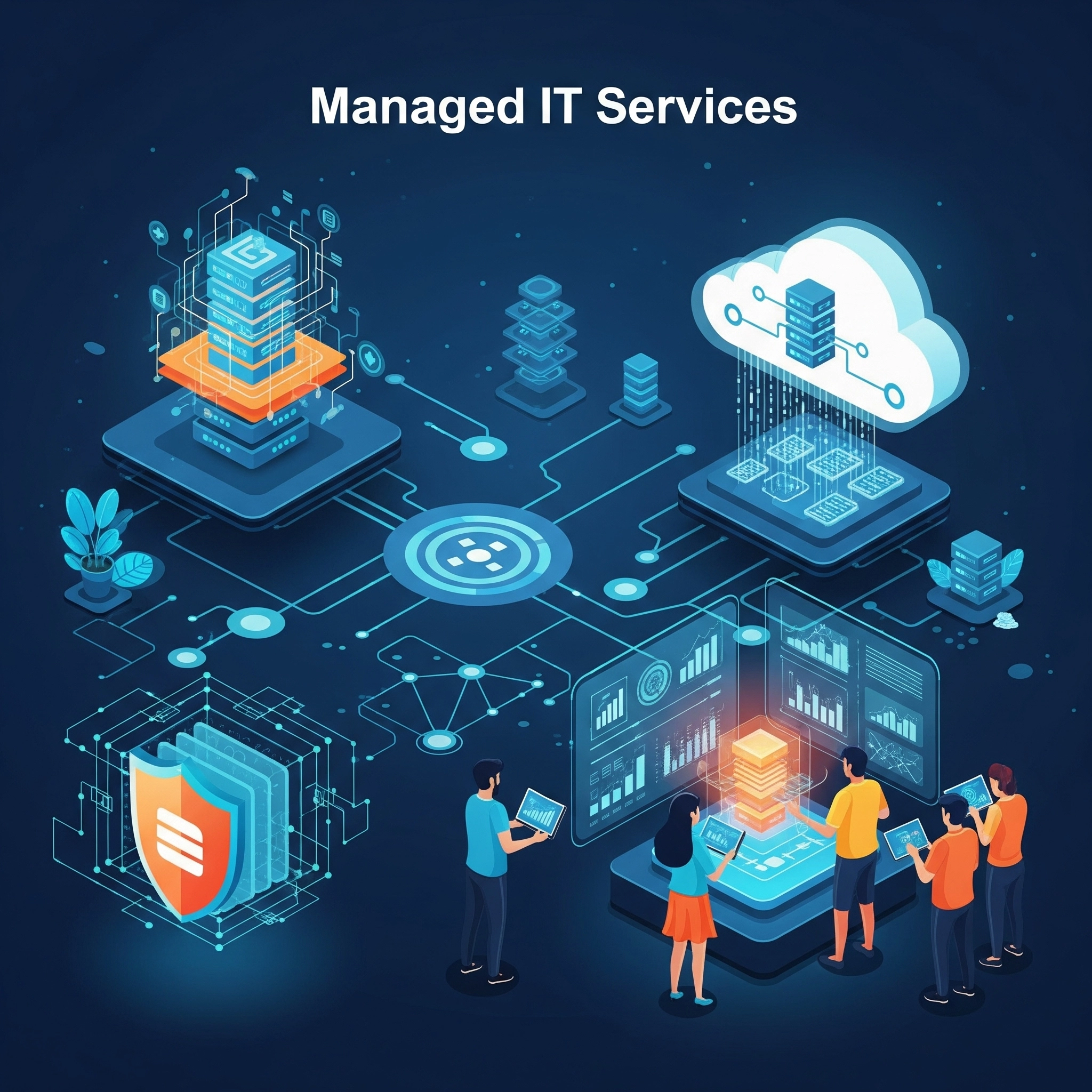
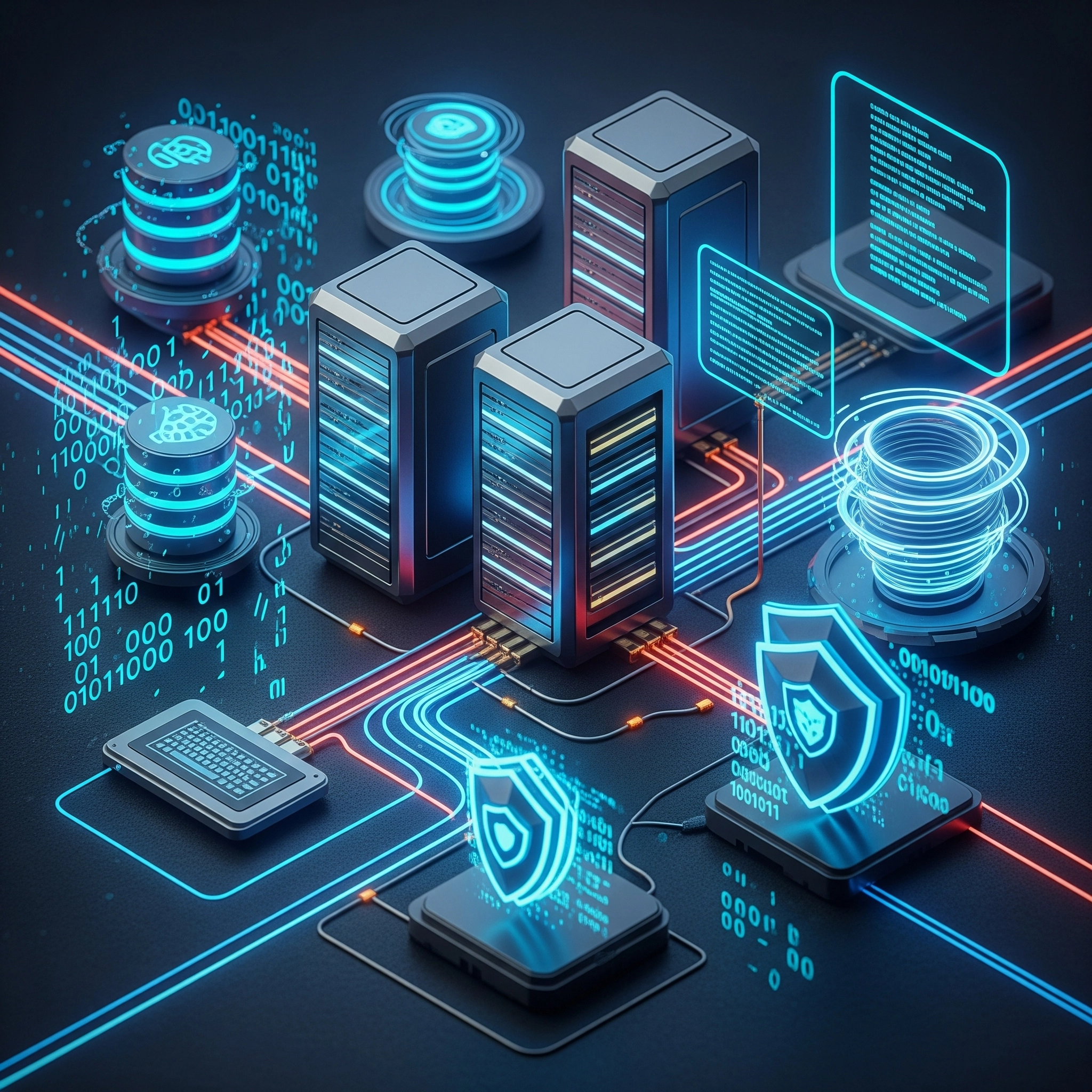
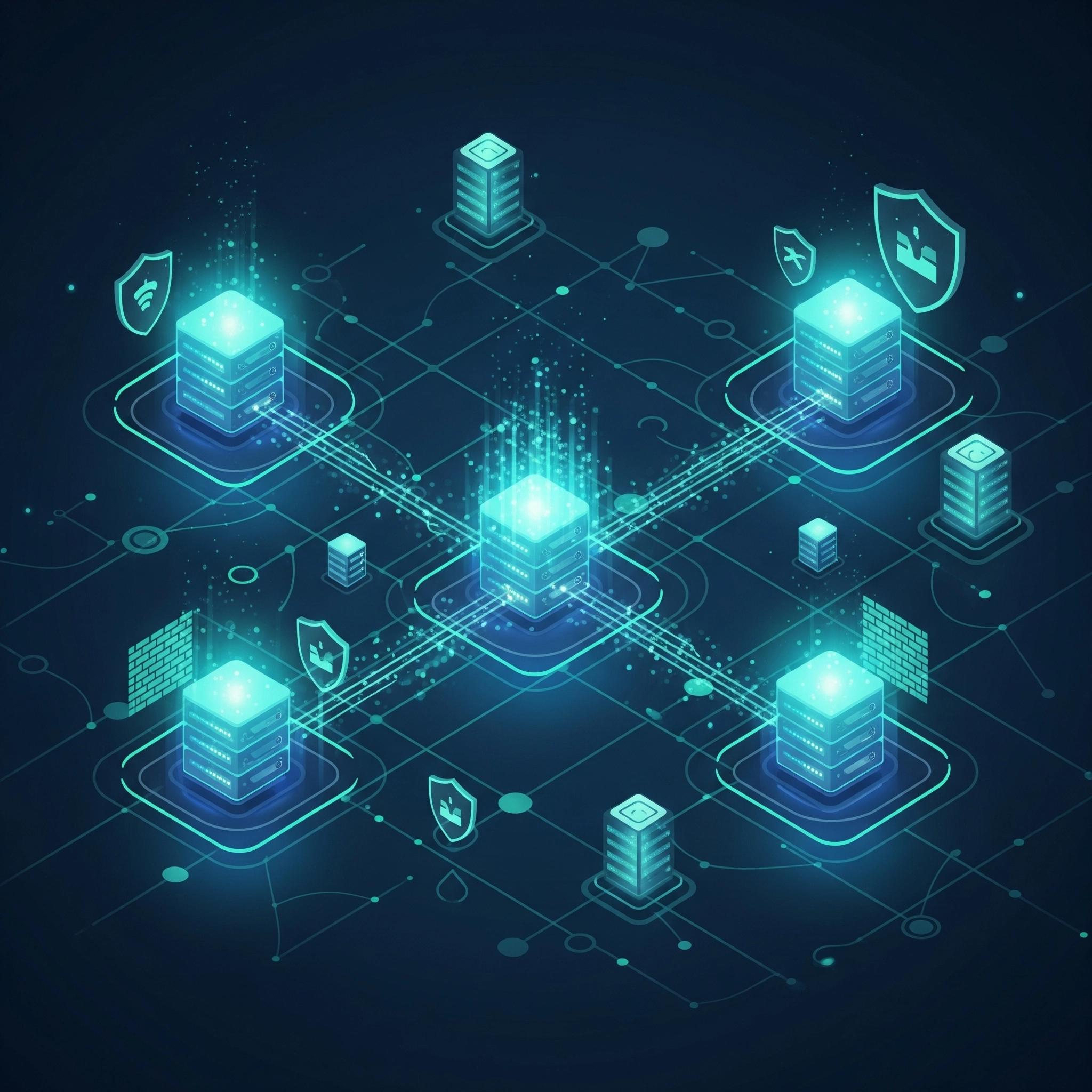
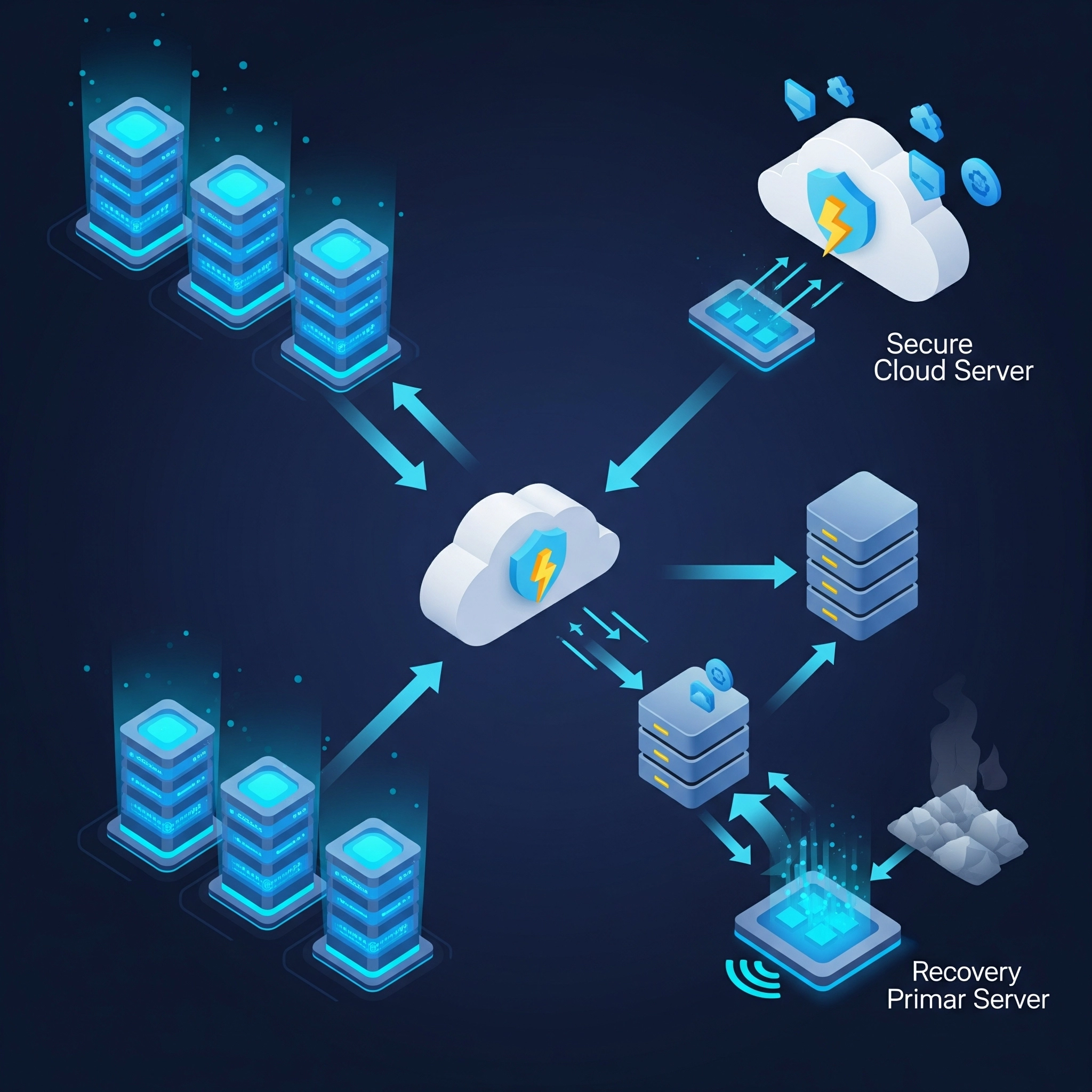

 Call Now
Call Now

